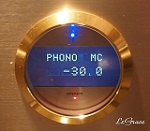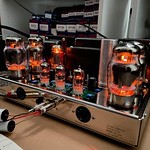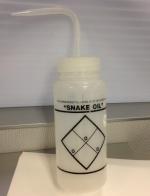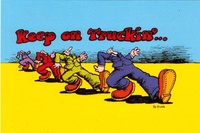+7
Dogstar
corndog71
Peter W.
GP49
peterh
cci1492
LeGrace
11 posters
Matched tubes to the rescue

LeGrace- Posts : 389
Join date : 2016-08-07
Location : Ontario, Canada
- Post n°1
 Matched tubes to the rescue
Matched tubes to the rescue
I have chronicled my trials and tribulations with my M125's. Blown rectifiers, tube failures, red plates, one thing after another. But all of a sudden my life is boring, no more issues. Amazing the difference using matched power tubes makes! Yellow sheet mod clearly helping as well.

cci1492- Posts : 331
Join date : 2016-05-09
Age : 64
Location : NJ
- Post n°2
 Re: Matched tubes to the rescue
Re: Matched tubes to the rescue
Makes sense, I wonder how much re-engineering of the biasing circuitry it would take to add a pot for each output tube on the M125. In addition, how much of a difference would a pot for each output tube would it make in the first place (ie..is the juice worth the squeeze)? Sorry for the hijack!

peterh- Posts : 1869
Join date : 2012-12-25
Location : gothenburg, sweden
- Post n°3
 Re: Matched tubes to the rescue
Re: Matched tubes to the rescue
cci1492 wrote:Makes sense, I wonder how much re-engineering of the biasing circuitry it would take to add a pot for each output tube on the M125. In addition, how much of a difference would a pot for each output tube would it make in the first place (ie..is the juice worth the squeeze)? Sorry for the hijack!
Matching tubes does not only has to do with adjusting idle current ( bias) but also
the tubes inherent amplification ( Gm ) . Individual bias adjustments won't help
the latter.
Tubes are not that expensive, just go for seriously matched tubes from
your favorite vendor. If bought from such a vendor AND the matching labels are
retained, replacements can be obtained during at least the first period of use if
one tube should fail. Also , if buying a quad for an amp that uses two pairs, if one
tubes breaks you still have one pair plus a spare tube for this pair, thus only a
pair need to be bought to replace a broken tube.
Conclution : buy new tubes, and don't bother with old yardsales, sell those on ebay!

GP49- Posts : 792
Join date : 2009-04-30
Location : East of the sun and west of the moon
- Post n°4
 Re: Matched tubes to the rescue
Re: Matched tubes to the rescue
I tried it on my Dynas. It wasn't worth the effort. It's not worth the effort to undo it, either.

Peter W.- Posts : 1351
Join date : 2016-08-07
Location : Melrose Park, PA
- Post n°5
 Re: Matched tubes to the rescue
Re: Matched tubes to the rescue
OK - some dissent on the entire issue of matching.
IF bias can be done for each tube, such that the individual tubes are operating at their idea bias point.
THEN only their inherent amplification is under discussion. There is no electronic or electrical risk to the amp or the tube due to poor bias.
IF we can agree to this premise,
THEN we move on to what happens with amplification with mismatched tubes.
Now, per specifications, the M125 is rated at 125 wpc/rms based on four (4) KT88 output tubes. 31.25 watts per tube. Make two tubes off-spec. by 20%, down. That would derate the amp to 112.5 wpc. Just under 1/2 dB. Point being that it would take a substantial mismatch to affect output levels in any meaningful way. Were tubes precision instruments made such that any two (or twenty) coming down the line would all be within 2%-5% of each other in every parameter, then the entire concept of matching would be moot. And tubes are also not matched to top-output-all-parameters-matching. They are matched in groups of 2/4/8 such that the parameters are within 2%-5%. But any group may be far apart from any other group. Nor do any two tubes age exactly the same to any other or even in a linear fashion.
Yes, it is nice to start off with a matched set of tubes. And Mr. McShane is a fair and reliable source of such groupings at a moderate additional cost to unmatched tubes, and yes, tubes are consumables with an indefinite but not infinite service-life. But, once the issue of bias is addressed and settled, matching is a far, far lesser issue.
IF bias can be done for each tube, such that the individual tubes are operating at their idea bias point.
THEN only their inherent amplification is under discussion. There is no electronic or electrical risk to the amp or the tube due to poor bias.
IF we can agree to this premise,
THEN we move on to what happens with amplification with mismatched tubes.
Now, per specifications, the M125 is rated at 125 wpc/rms based on four (4) KT88 output tubes. 31.25 watts per tube. Make two tubes off-spec. by 20%, down. That would derate the amp to 112.5 wpc. Just under 1/2 dB. Point being that it would take a substantial mismatch to affect output levels in any meaningful way. Were tubes precision instruments made such that any two (or twenty) coming down the line would all be within 2%-5% of each other in every parameter, then the entire concept of matching would be moot. And tubes are also not matched to top-output-all-parameters-matching. They are matched in groups of 2/4/8 such that the parameters are within 2%-5%. But any group may be far apart from any other group. Nor do any two tubes age exactly the same to any other or even in a linear fashion.
Yes, it is nice to start off with a matched set of tubes. And Mr. McShane is a fair and reliable source of such groupings at a moderate additional cost to unmatched tubes, and yes, tubes are consumables with an indefinite but not infinite service-life. But, once the issue of bias is addressed and settled, matching is a far, far lesser issue.

corndog71- Posts : 840
Join date : 2013-03-19
Location : It can get windy here
- Post n°6
 Re: Matched tubes to the rescue
Re: Matched tubes to the rescue
cci1492 wrote:Makes sense, I wonder how much re-engineering of the biasing circuitry it would take to add a pot for each output tube on the M125. In addition, how much of a difference would a pot for each output tube would it make in the first place (ie..is the juice worth the squeeze)? Sorry for the hijack!
I could be wrong but I don't think that would work in the M125. In the original ST70 there is a pair tubes in a given channel which operate in a push/pull arrangement and share a test point and resistor to ground. On the VTA70/120 you also have a pair of output tubes per channel but each tube can be adjusted separately. In a M125 it's essentially the same circuit (but only one channel) except you have 2 output tubes connected in parallel for each half of that same push/pull operation. Since they are connected in parallel they share the same resistor to ground and test point. There's no reason to use separate pot for each of the four output tubes nor do I think it's possible in this circuit. Hopefully this makes sense.
I would also add this biasing circuit has little to do with sound quality and more to do with keeping the tubes operating normally.

peterh- Posts : 1869
Join date : 2012-12-25
Location : gothenburg, sweden
- Post n°7
 Re: Matched tubes to the rescue
Re: Matched tubes to the rescue
Peter W. wrote:OK - some dissent on the entire issue of matching.
IF bias can be done for each tube, such that the individual tubes are operating at their idea bias point.
THEN only their inherent amplification is under discussion. There is no electronic or electrical risk to the amp or the tube due to poor bias.
IF we can agree to this premise,
THEN we move on to what happens with amplification with mismatched tubes.
Now, per specifications, the M125 is rated at 125 wpc/rms based on four (4) KT88 output tubes. 31.25 watts per tube. Make two tubes off-spec. by 20%, down. That would derate the amp to 112.5 wpc. Just under 1/2 dB. Point being that it would take a substantial mismatch to affect output levels in any meaningful way. Were tubes precision instruments made such that any two (or twenty) coming down the line would all be within 2%-5% of each other in every parameter, then the entire concept of matching would be moot. And tubes are also not matched to top-output-all-parameters-matching. They are matched in groups of 2/4/8 such that the parameters are within 2%-5%. But any group may be far apart from any other group. Nor do any two tubes age exactly the same to any other or even in a linear fashion.
Yes, it is nice to start off with a matched set of tubes. And Mr. McShane is a fair and reliable source of such groupings at a moderate additional cost to unmatched tubes, and yes, tubes are consumables with an indefinite but not infinite service-life. But, once the issue of bias is addressed and settled, matching is a far, far lesser issue.
Gm has nothing to do with ability to generate power, it is how much signal is needed
for a given output level.
Unmatched Gm will affect ( in a push-pull amp) that the positive half of the
signal is more or less then the negative ones.In effect creating second overtone. This
will be reduced by the feedback in the amp, but is there to some extent, and in
cases where the amp is saturated then the feedback is unable to correct the
misbalance.
Gm differs typically +-20% in new tubes ( from the vendor i trade ) and
this difference seems uncorrelated to bias.

cci1492- Posts : 331
Join date : 2016-05-09
Age : 64
Location : NJ
- Post n°8
 Re: Matched tubes to the rescue
Re: Matched tubes to the rescue
Good information, thank you.

Dogstar- Posts : 361
Join date : 2014-06-23
- Post n°9
 Re: Matched tubes to the rescue
Re: Matched tubes to the rescue
All these tube junkies that are after NOS tubes with the thought that they are going to somehow sound better, but as you point out, especially with an M125, really probably don't because there is no way I'm going to believe that they are capable of being 'matched close enough'.
I asked if matching tubes was really a necessity in another thread. The initial answer was yes...but not 100% and that's why the ability to bias is there. Yet since there is no way to bias all of the tubes on an M125 it makes it more important to match them more closely because the bias only works for 2 pairs of tubes for each channel not all four individually..
So... I imagine that most can tell whether the tubes are matched or not as what has been written in this thread. Or there is this thinking that maybe most can't because maybe they really haven't heard what the difference is between a good matched set and a non-matched set sounds like?
I asked if matching tubes was really a necessity in another thread. The initial answer was yes...but not 100% and that's why the ability to bias is there. Yet since there is no way to bias all of the tubes on an M125 it makes it more important to match them more closely because the bias only works for 2 pairs of tubes for each channel not all four individually..
So... I imagine that most can tell whether the tubes are matched or not as what has been written in this thread. Or there is this thinking that maybe most can't because maybe they really haven't heard what the difference is between a good matched set and a non-matched set sounds like?

corndog71- Posts : 840
Join date : 2013-03-19
Location : It can get windy here
- Post n°10
 Re: Matched tubes to the rescue
Re: Matched tubes to the rescue
Tube matching and idle current levels set by the "bias" controls are not completely related.
Consider what another tube vendor has written about the subject. http://www.ramlabs-musicreference.com/virtues.html
For a visual representation of the above watch this.

Jim McShane- Posts : 237
Join date : 2011-10-19
Location : South Suburban Chicago
- Post n°11
 Re: Matched tubes to the rescue
Re: Matched tubes to the rescue
corndog71 wrote:
Tube matching and idle current levels set by the "bias" controls are not completely related.
Consider what another tube vendor has written about the subject. http://www.ramlabs-musicreference.com/virtues.html
For a visual representation of the above watch this.
That is a very good video, I recommend it as well. I don't 100% agree with everything Roger says but he hits some real important points for sure. You may need to watch it a few times to get it all.
There is a difference between achieving DC balance and proper bias current levels and AC balance. Consider just this one scenario - you have (2) power tubes that need to be biased at 50 ma. per tube in your amp. One of the power tubes only needs -45 negative volts on the grid to get it to pass 50 ma. in the amp. The other tube requires -52 volts to achieve the 50 ma. in the same amp. So while you've achieved the DC bias levels you wanted consider that the tubes are operating at different points - different portions of their curves. This can create distortion in a number of ways. Also because of the difference in the grid voltages one tube will be driven into cutoff before the other which certainly contributes to distortion.
That's a very simplified explanation but Roger gets into some things a bit more deeply and it's worth trying to absorb what the video presents - at least IMHO. As I said, I don't agree with everything he says but he's a smart guy and is sharing a lot of great info. I learned a lot from it years ago when I first watched the video.

Tubes4ever- Posts : 167
Join date : 2015-07-14
Location : Star, Idaho
- Post n°12
 Re: Matched tubes to the rescue
Re: Matched tubes to the rescue
Jim,
Would be great if you could highlight what you disagree with in the video. It would help us learn more.
Would be great if you could highlight what you disagree with in the video. It would help us learn more.

Jim McShane- Posts : 237
Join date : 2011-10-19
Location : South Suburban Chicago
- Post n°13
 Re: Matched tubes to the rescue
Re: Matched tubes to the rescue
Tubes4ever wrote:Jim,
Would be great if you could highlight what you disagree with in the video. It would help us learn more.
It's been a while since I've seen it. I do recall my disagreements were mostly based not on factual issues but degrees of importance and similar things like that; but I can't recall specifics. If I can find time to watch it again and refresh my memory I'll post what I can. It may be a bit - I'm pretty busy (fortunately!).

deepee99- Posts : 2244
Join date : 2012-05-23
Location : Wallace, Idaho
- Post n°14
 Re: Matched tubes to the rescue
Re: Matched tubes to the rescue
Lest we forget, no matter how closely tubes are matched at the factory, or even those surviving Jim McShane's torture tests, they're not going to be "matched" after a few months (hours?) use. Best to start with a closely matched pair or quad, certainly, but they're going to wander off at some point. Just the way power tubes (and even signal triodes) are. I think a close eye on bias at least is predictive of misbehaviour and potential damage to both the tubes and the bias circuit.
Something I find very handy is a real-time ammeter. Any aberrations from normal are indicative of a problem.
Something I find very handy is a real-time ammeter. Any aberrations from normal are indicative of a problem.

cci1492- Posts : 331
Join date : 2016-05-09
Age : 64
Location : NJ
- Post n°15
 Re: Matched tubes to the rescue
Re: Matched tubes to the rescue
LeGrace wrote:I have chronicled my trials and tribulations with my M125's. Blown rectifiers, tube failures, red plates, one thing after another. But all of a sudden my life is boring, no more issues. Amazing the difference using matched power tubes makes! Yellow sheet mod clearly helping as well.
But can mismatched output tubes cause the problems LeGrace was seeing? Or did the yellow sheet mod ironed out the issue?
LeGrace, are you using the copper SS rectifier or are you using GZ34 / 5AR4 these days?

Jim McShane- Posts : 237
Join date : 2011-10-19
Location : South Suburban Chicago
- Post n°16
 Re: Matched tubes to the rescue
Re: Matched tubes to the rescue
deepee99 wrote:Lest we forget, no matter how closely tubes are matched at the factory, or even those surviving Jim McShane's torture tests, they're not going to be "matched" after a few months (hours?) use. Best to start with a closely matched pair or quad, certainly, but they're going to wander off at some point. Just the way power tubes (and even signal triodes) are. I think a close eye on bias at least is predictive of misbehaviour and potential damage to both the tubes and the bias circuit.
Something I find very handy is a real-time ammeter. Any aberrations from normal are indicative of a problem.
There is a short paragraph in the back of the Harman-Kardon Citation II owner's/assembly manual that is interesting regarding deepee99's post. Here it is:
"The use of balanced output tubes is preferred although not mandatory. There is a statistical rate of probability that matched tubes will age at a more equal rate than unmatched tubes requiring less frequent adjustment. If it is necessary to replace a KT88/6550 output tube, it is advisable to replace both tubes of the channel. Matched KT88/6550’s are available at most stores or through Harman-Kardon."
I can't tell you what the math is behind the "statistical rate of probability" but I can tell you this paragraph has always influenced me since it came from Stu Hegeman (Citation series designer) and his team. They knew their stuff.

peterh- Posts : 1869
Join date : 2012-12-25
Location : gothenburg, sweden
- Post n°17
 Re: Matched tubes to the rescue
Re: Matched tubes to the rescue
deepee99 wrote:Lest we forget, no matter how closely tubes are matched at the factory, or even those surviving Jim McShane's torture tests, they're not going to be "matched" after a few months (hours?) use. Best to start with a closely matched pair or quad, certainly, but they're going to wander off at some point. Just the way power tubes (and even signal triodes) are. I think a close eye on bias at least is predictive of misbehaviour and potential damage to both the tubes and the bias circuit.
Something I find very handy is a real-time ammeter. Any aberrations from normal are indicative of a problem.
quality tubes will age together (!)
The one i have seen that is matched as new will be matched when old ( but their
properties will change by time, thus one should recheck bias annualy at least)
Abused tubes ( that has redplated and been abused) may differ in this behaviour.

Peter W.- Posts : 1351
Join date : 2016-08-07
Location : Melrose Park, PA
- Post n°18
 Re: Matched tubes to the rescue
Re: Matched tubes to the rescue
quality tubes will age together (!)
This is quite the subtle statement. It could mean:
a) if the tubes do not age together, they are not "quality".
b) all tubes in the same device age together. However nothing is stated or implied that such aging is either parallel or linear.
c) the specific experience is driving the general statement - this could be the fallacy of false premises, or the result of considerable examples without exceptions.
Not to badger the witness - as I have a quad of vintage Siemens thin-man EL34s with many thousands of hours on them that still test 'strong' and are within 5% on those critical parameters. But I also have a neighbor that had me test 12 new-issue Tung-Sol KT88s each with less than 1,000 hours that were supplied as 'matched quads' (*NOT* from Mr. McShane, BTW - to whom he was referred). Of that 12, only two passed minimum new-spec. on my Hickok, and only two could be described as matched in any meaningful way - which also happened to be the two strongest.
Happily, his two amps allow for individual bias.
I am acutely skeptical of the entire concept of matching as it is so generally misunderstood. For those that do actually understand both the concept and the pitfalls of such imperfect devices as vacuum tubes, fine. Go for it! For others, concentrate on the very real electrical consequences and focus on the bias settings. And, above all, enjoy the music!
This is quite the subtle statement. It could mean:
a) if the tubes do not age together, they are not "quality".
b) all tubes in the same device age together. However nothing is stated or implied that such aging is either parallel or linear.
c) the specific experience is driving the general statement - this could be the fallacy of false premises, or the result of considerable examples without exceptions.
Not to badger the witness - as I have a quad of vintage Siemens thin-man EL34s with many thousands of hours on them that still test 'strong' and are within 5% on those critical parameters. But I also have a neighbor that had me test 12 new-issue Tung-Sol KT88s each with less than 1,000 hours that were supplied as 'matched quads' (*NOT* from Mr. McShane, BTW - to whom he was referred). Of that 12, only two passed minimum new-spec. on my Hickok, and only two could be described as matched in any meaningful way - which also happened to be the two strongest.
Happily, his two amps allow for individual bias.
I am acutely skeptical of the entire concept of matching as it is so generally misunderstood. For those that do actually understand both the concept and the pitfalls of such imperfect devices as vacuum tubes, fine. Go for it! For others, concentrate on the very real electrical consequences and focus on the bias settings. And, above all, enjoy the music!

peterh- Posts : 1869
Join date : 2012-12-25
Location : gothenburg, sweden
- Post n°19
 Re: Matched tubes to the rescue
Re: Matched tubes to the rescue
I have 4 JJ 6550 with 3400h in my vta70.
I matched them when new, and they still matches.
I matched them when new, and they still matches.

LeGrace- Posts : 389
Join date : 2016-08-07
Location : Ontario, Canada
- Post n°20
 Re: Matched tubes to the rescue
Re: Matched tubes to the rescue
cci1492 wrote:LeGrace wrote:I have chronicled my trials and tribulations with my M125's. Blown rectifiers, tube failures, red plates, one thing after another. But all of a sudden my life is boring, no more issues. Amazing the difference using matched power tubes makes! Yellow sheet mod clearly helping as well.
But can mismatched output tubes cause the problems LeGrace was seeing? Or did the yellow sheet mod ironed out the issue?
LeGrace, are you using the copper SS rectifier or are you using GZ34 / 5AR4 these days?
Neither, GZ37. I bought 4, one for each amp and two spares. Not long after installing them I experienced the first of two red plate episodes involving the rectifier. If you google red plate you can see examples typically where some portion of a tube is glowing slightly red. However mine was the color of a fire truck top to bottom, a nerve wracking spectacle. The heat was intense. After the amp had cooled I fired it backup and isolated the cause. The bias setting on one side which should be at 1v was only reading 0.5v, way below normal. Back then I might check bias once a month as I've seen it stated this frequency is adequate. I beg to differ. I started doing daily bias checks and noticed it was jumping around on one tube pair. So I got into this routine where I was just adjusting it back to 1v and everything was fine for several more weeks. Then bang, another red plate episode, a bit milder this time. The bias had shifted again within just a few hours. So I replaced the tube pair and now my bias is rock stable both sides and no further red plates of my precious GZ37's. Someone more knowledgeable would have cottoned onto the power tube more quickly, but I am still in learning mode.
The tubes actually started out matched, problem was one of them began ageing at a much faster rate. Rectifier plating was like the canary in the coal mine signalling one of the tubes was going bad. Amazingly that G37 soldiers on, talk about tough old birds.

Dale Stevens- Posts : 206
Join date : 2014-07-06
Age : 75
Location : Loris, SC
- Post n°21
 Re: Matched tubes to the rescue
Re: Matched tubes to the rescue
I've built racing engines and everything has to be matched! Would not even consider
buying unmatched tubes; Also would not consider buying any tubes from anyone cept
Jim McShane . Dale
buying unmatched tubes; Also would not consider buying any tubes from anyone cept
Jim McShane . Dale
